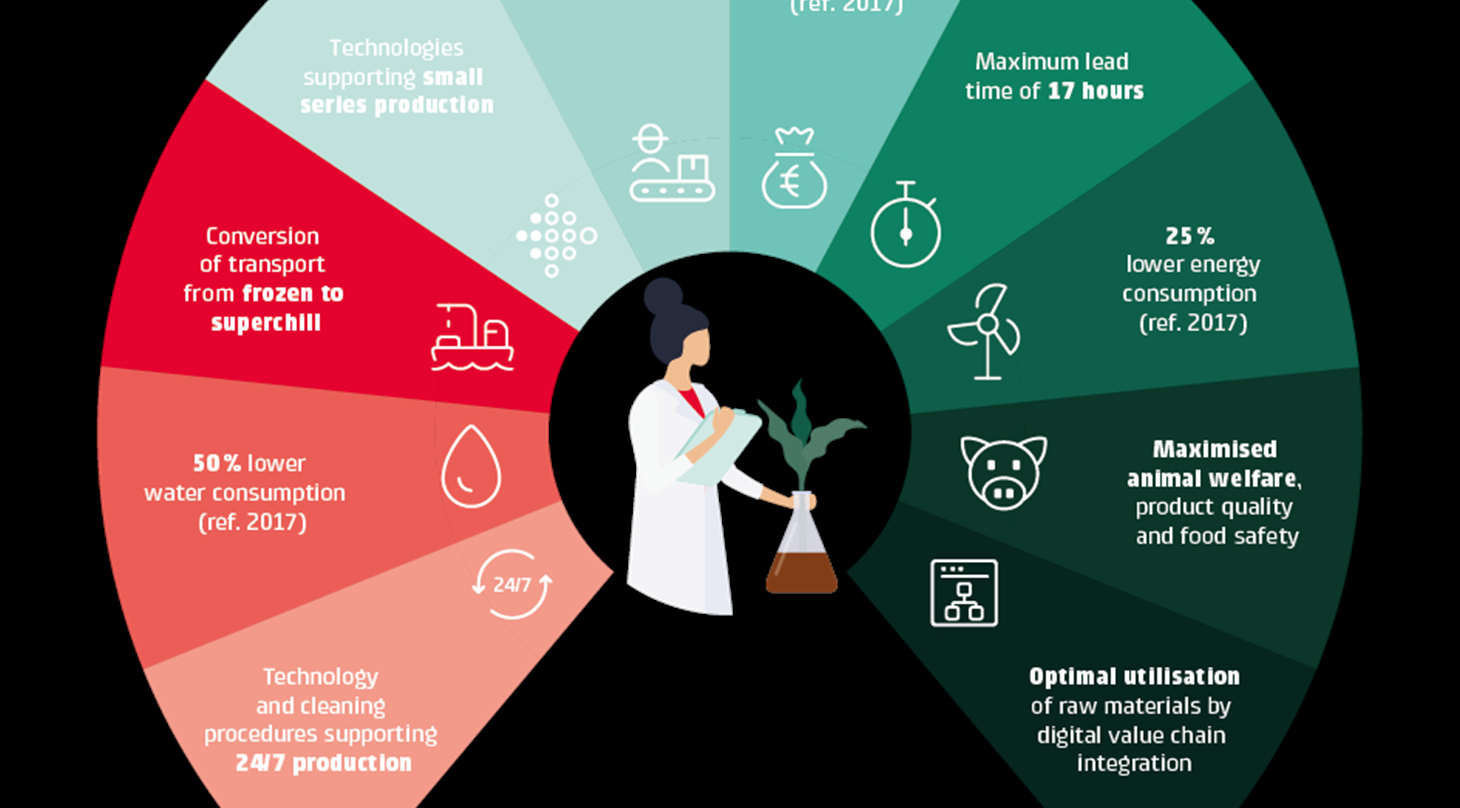
10 development goals towards 2030
The meat industry’s raison d'être is challenged by consumers all over the world. Competition is fiercer than ever, and consumer demands in terms of e.g. working environment, animal welfare and traceability are increasing every day.
By launching these 10 development goals, we aim to help the industry to develop and implement the right solutions to overcome these challenges.
| Technology and cleaning procedures support 24/7 production Slaughterhouses’ operation is based on a 24/7 philosophy. |
| 50 pct. lower water consumption (ref. 2017) Water consumption must be reduced by 50% compared to a 2017 benchmark. |
Conversion of transport from frozen to superchill The slaughterhouse must supply parts and freshly packaged cuts in accordance with customer specifications, including at the requested temperatures (-1-+5°C). | |
Production technologies support small series products The slaughterhouse must be able to handle larger variations in both raw materials and product range than was the case in 2017. The facility must be able to handle series of pigs of less than 200 animals. The slaughterhouse must utilize quality measurement technology and computer systems for optimized raw material utilization and quality documentation. | |
Elimination of stressful working operations By means of automation and redesign of processes, it must be possible to remove all physically stressful functions in the production.The number of work injuries must be on a par with other Danish manufacturing industries. | |
Efficiency improvement of 30 pct. (ref. 2017) The slaughterhouse costs for direct salaries must be reduced by 30% compared to a 2017 benchmark. The savings are to be obtained from cleaning, internal transport and packing facilities. | |
Maximum lead time of 17 hours The slaughterhouse’s logistics must be lean. | |
| 25 pct. lower energy consumption (ref. 2017) Energy consumption is to be reduced by 25% compared to a 2017 benchmark. | |
Maximized animal welfare, product quality and food safety Production and process conditions must be ”state of the art” in relation to ensuring good animal welfare, high product quality and food safety. Drip loss must be max. 3.5% in loins with a deviation of max. 1.7%. Blood spots in top round max. 10% and tenderloin haemorrhage max. 5%. | |
Optimal utilization of raw materials by digital value chain integration There must be capitalized on the digital opportunities, and therefore practical solutions must be developed to utilize the digital information on raw materials and production equipment, for example by smart data, including by linking data from the primary production with slaughterhouse operations and sales for optimization purposes. |